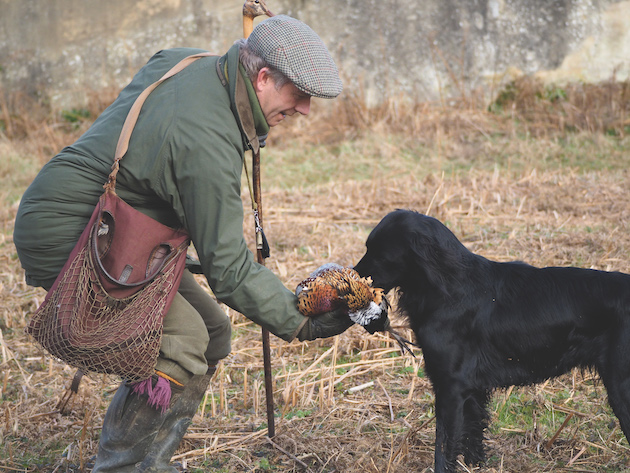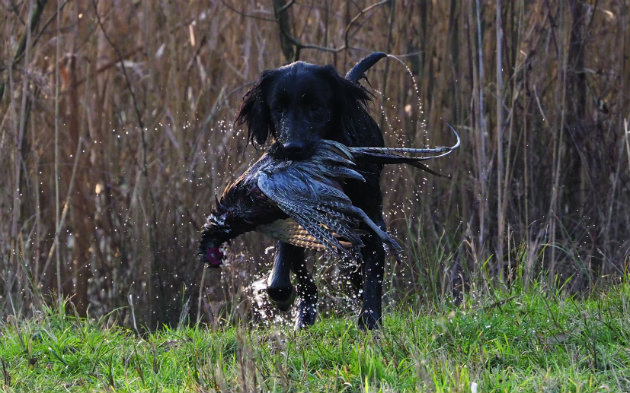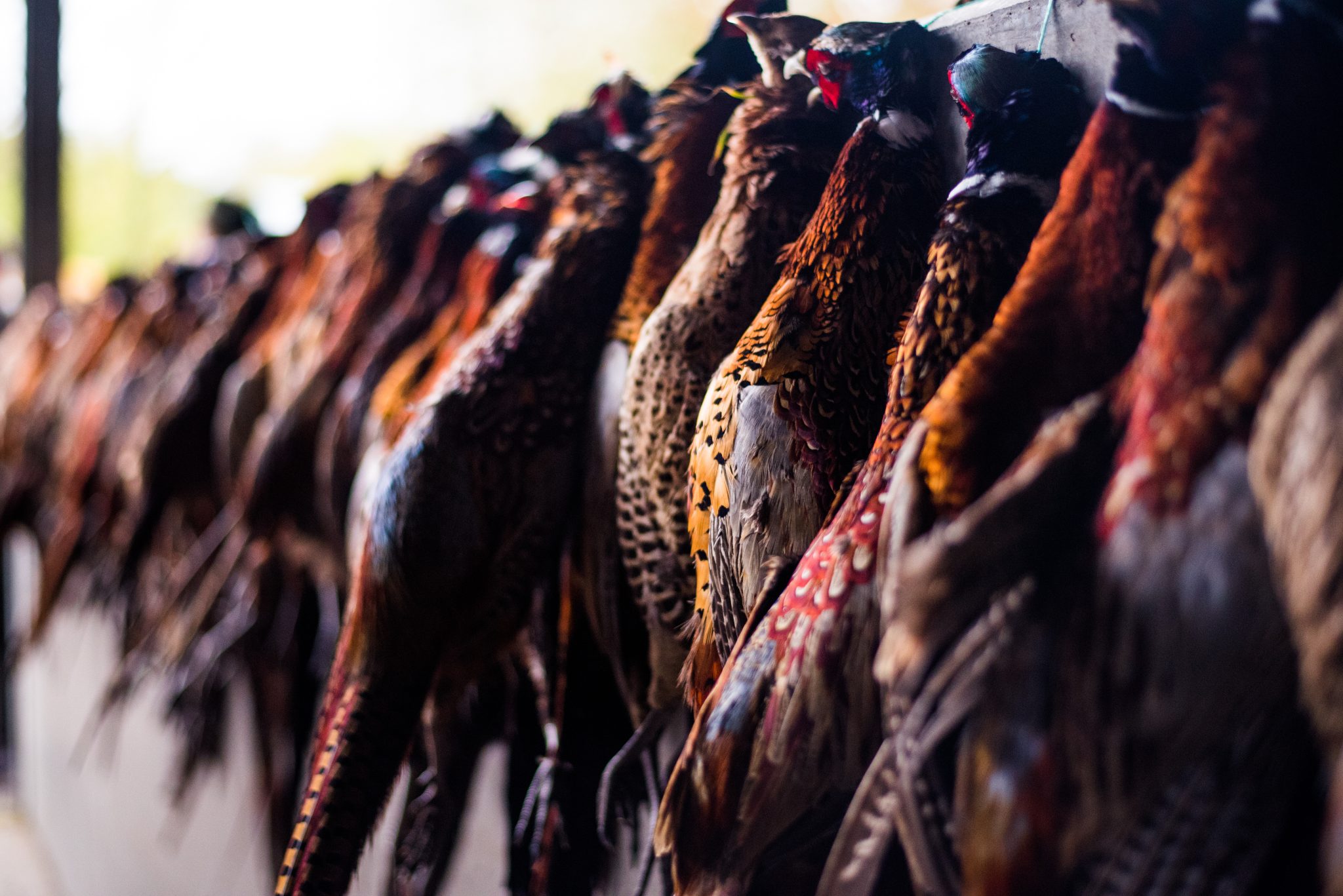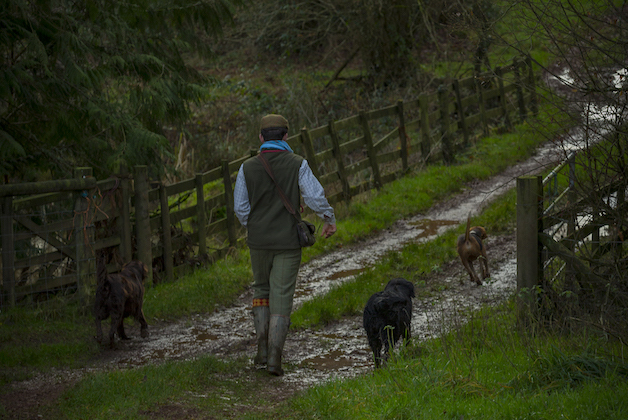Win CENS ProFlex DX5 earplugs worth £1,149 – enter here
What’s happened to the flatcoat retriever?
 Picking up with a flatcoated retriever
Picking up with a flatcoated retriever
What is it about the flatcoat retriever that makes it so successful at Crufts? It’s a question lots of showing enthusiasts have been asking themselves after Norwegian-owned flatcoat retriever Almanza Backseat Driver, or Baxer, took the coveted Best in Show title at the show in March 2022. This puts the flatcoat in joint fifth place in the list of the most successful breeds at Crufts, for this year’s win was the third for the breed. The first was in 1980, the second in 2011.
https://twitter.com/Crufts/status/1503115838345330692
To put this success into perspective, you have to go back a long way. Labradors have also taken the title three times, but the last victory for Britain’s favourite breed of gundog was back in 1937, when Lorna, Countess Howe, won for the third time. Countess Howe was one of the last exhibitors at Crufts to both show and work her dogs with equal enthusiasm, for she also won the Retriever Championship on three occasions.
Perhaps most surprisingly, Best in Show is a title that has never been claimed by a golden retriever, usually the most numerous breed to be shown at Crufts. This year, 458 golden retrievers were entered, along with 456 labradors. In contrast, there were 224 flatcoats but, when you consider it, that’s a very high number, because the breed is vastly outnumbered by both the other retrievers. It’s a fact that today the flatcoat is considerably more popular in the show ring than on the shooting field.
Over the years, I’ve seen a lot of flatcoats out shooting, almost all being worked as picking-up dogs, something at which they excel. I’ve heard it argued that the flatcoat is the best picking-up dog of the lot, a fact that many labrador owners would dispute, but there’s no doubt that a well-trained flatcoat can be impressive: soft-mouthed, good nose and able to work on its own initiative.
The downside of the flatcoat, at least according to owners I have spoken to, is that it is the Peter Pan of the gundog world, as it takes time to mature and is generally much slower to learn its trade than a labrador. I have also heard other trainers say this isn’t true and that too many handlers use it as an excuse. Treat the dog as you would a labrador and you will get the results you are hoping for.
However, when it comes to retrieving competitions, there’s no doubt that the labrador has the edge. It’s hard to define why, but labradors have that little bit of extra drive that is essential to bring home the trophies in trials and tests, making FTCh flatcoats extremely rare animals. As far as I am aware, only four FTCh flatcoats have been made up since the war. The first and last time a flatcoat won the Retriever Championship was in 1912. (Read more What do the letters FTCh mean?)

Flatcoats make excellent shooting dogs, but they also excel in the show ring
Flatcoat retriever working lines
To the unpractised eye, there’s little visual difference between the show and working strains of flatcoats. The 1980 Best in Show winner, Shargleam Blackcap, was actively used as a picking-up dog, but I don’t believe that the 2011 winner, Vbos the Kentuckian, was worked and I doubt if this year’s winner has ever been in the shooting field. There’s not a lot of work for picking-up dogs in Norway.
According to Ingemar Borelius, the Swedish writer of a long but fascinating article — The past and future of the working flatcoated retriever — Blackcap’s win in 1980 was a turning point for the breed.
It marked the moment when the flatcoat went from being primarily a working gundog to a show dog. Borelius notes: “It was quite obvious that a rapidly growing number of show-oriented breeders had little or no interest in the working qualities of the breed.” He pointed out that show people tended to favour “a dog that is higher, heavier, shorter on the legs, more longcast and more heavily coated/feathered than the dog the working man prefers”.
Perhaps 40 years isn’t long enough for the show and working lines of flatcoats to have visibly split, but the breed is changing, as all breeds invariably do. I can remember going to Crufts a decade ago and being struck by how similar all the flatcoats looked, at least to my untrained eye.
That year, a friend had qualified her flatcoat. When she arrived, she met her dog’s breeder, who insisted that she, rather than my friend, should take the dog into the ring. “Why?” my friend asked. “Because the judge knows me” was the reply — a comment that reveals a lot about showing dogs that look so similar.
Unfortunately, flatcoats have one of the lowest levels of genetic diversity of any of the gundogs, leading to numerous hereditary health problems, ranging from cancer to degenerative myelopathy. One solution would be introducing fresh blood from another breed.
Borelius points out that the flatcoat heritage includes a lot of out-crossing to both labradors and golden retrievers, and argues that an infusion of working labrador blood would probably be the most effective way to restore the flatcoat as a first-class working dog, while increasing the breed’s genetic diversity.
It’s a great suggestion, but I would be amazed if it was ever adopted.
The flatcoat retriever at Crufts 2022
It was a memorable Crufts for flatcoated retrievers as the Northesk Memorial Trophy, awarded to the top dog in the BASC Gamekeepers’ Rings, was won by a four-year-old flatcoat belonging to gamekeeper Helen Fox.
The dog, known as Ruger (Satinbaze Cracksman For Blacktoft) was handled by Helen’s daughter, Megan. Unlike Baxer, the Best in Show winner, Ruger is a proper working gundog and recently completed his first full season on the Wheatley Grange shoot in Nottinghamshire.
The most obvious difference between the two dogs is that Ruger is black, Baxer is liver. As with labradors, black is the dominant inherited colour of flatcoats, but liver-coloured dogs are not uncommon. The colour is caused by a recessive gene and has been recognised as an official flatcoat colour since the 1940s. Perhaps surprisingly, it has yet to be renamed chocolate.
Flatcoats will also occasionally produce yellow puppies. You won’t be surprised to learn that they look very much like golden retrievers. The correct way to refer to one is as a yellow flatcoat, never golden. The Flatcoated Retriever Society (FRS) does acknowledge the existence of such dogs, but frowns on breeders who intentionally breed them. As yellow isn’t an official flatcoat colour, yellow dogs aren’t recognised by the Kennel Club, so can’t be shown. However, rather curiously, they can be registered with the KC.
There’s now a DNA test available for breeders to check whether their flatcoat carries the yellow gene. The FRS advises owners that great care should be taken to avoid breeding yellow puppies and that “if it is known that your dog or bitch could carry the yellow gene, every effort should be made to reduce the possibility of producing them”.
It does seem sad that a pure-bred dog can be disqualified from competitions simply because it’s the wrong colour, but the world of pedigree dogs is a strange one, as colour prejudice is still the norm.
This article was originally published in 2019 and has been updated.
Related Articles
Get the latest news delivered direct to your door
Subscribe to Shooting Times & Country
Discover the ultimate companion for field sports enthusiasts with Shooting Times & Country Magazine, the UK’s leading weekly publication that has been at the forefront of shooting culture since 1882. Subscribers gain access to expert tips, comprehensive gear reviews, seasonal advice and a vibrant community of like-minded shooters.
Save on shop price when you subscribe with weekly issues featuring in-depth articles on gundog training, exclusive member offers and access to the digital back issue library. A Shooting Times & Country subscription is more than a magazine, don’t just read about the countryside; immerse yourself in its most authoritative and engaging publication.








